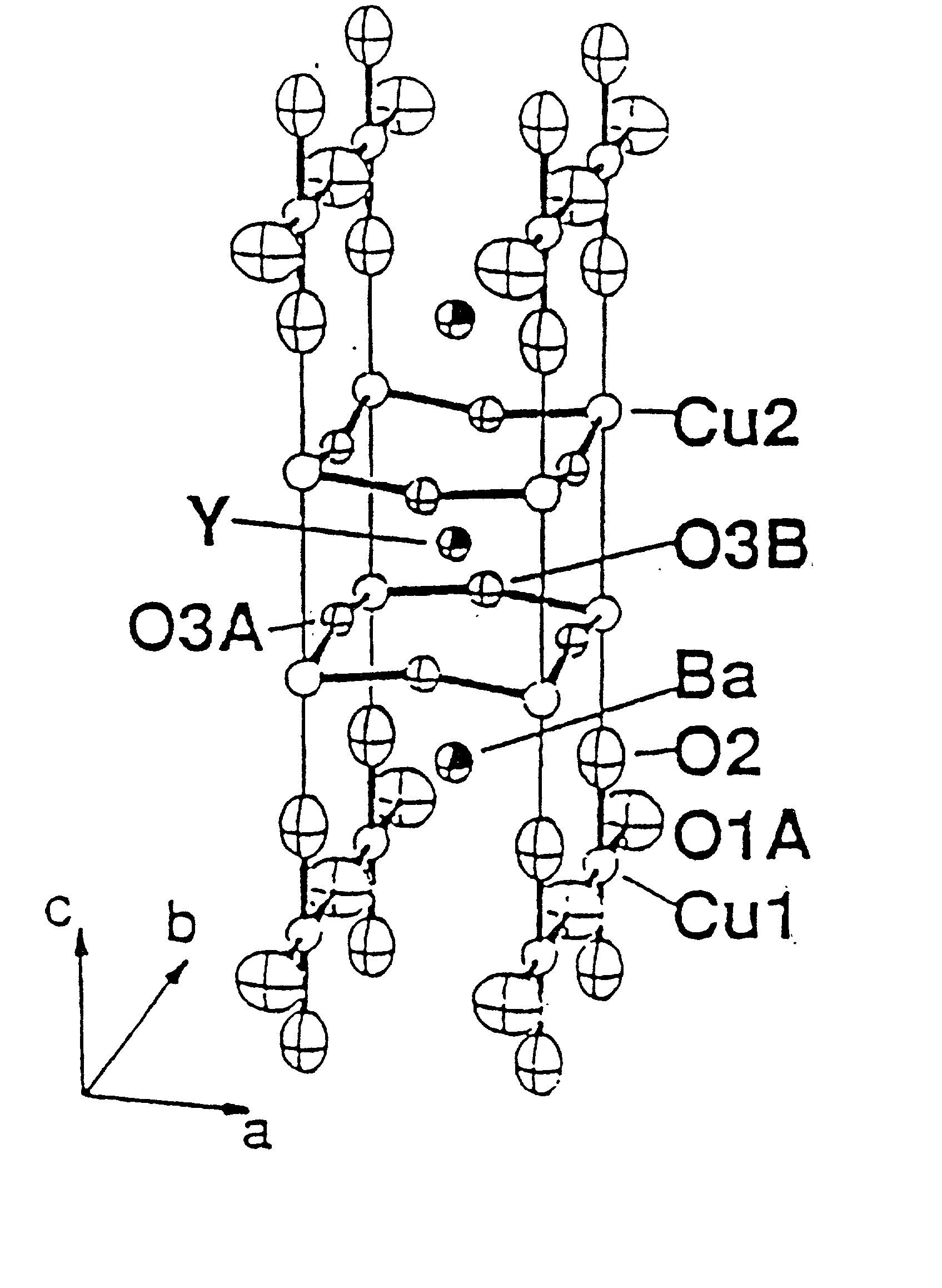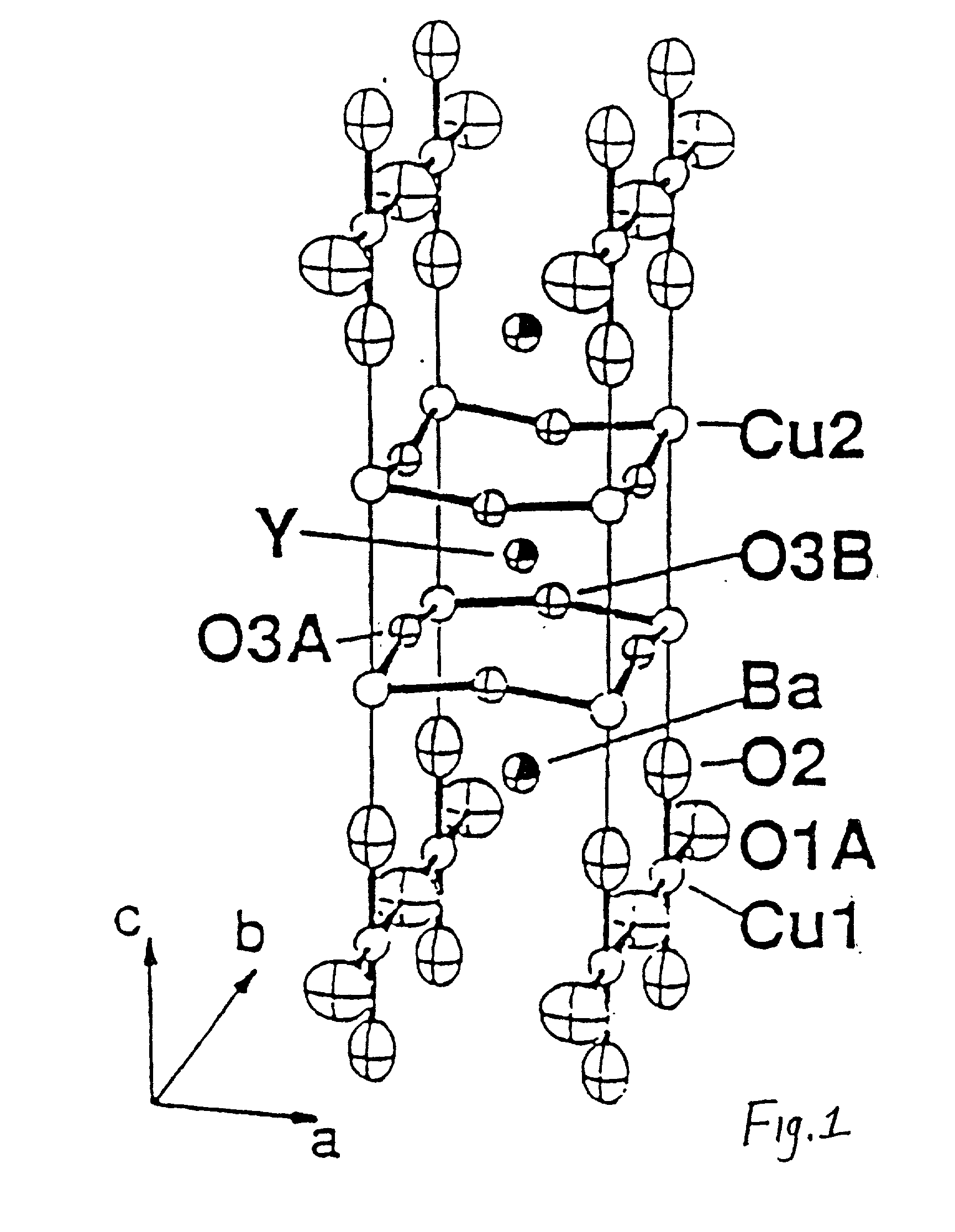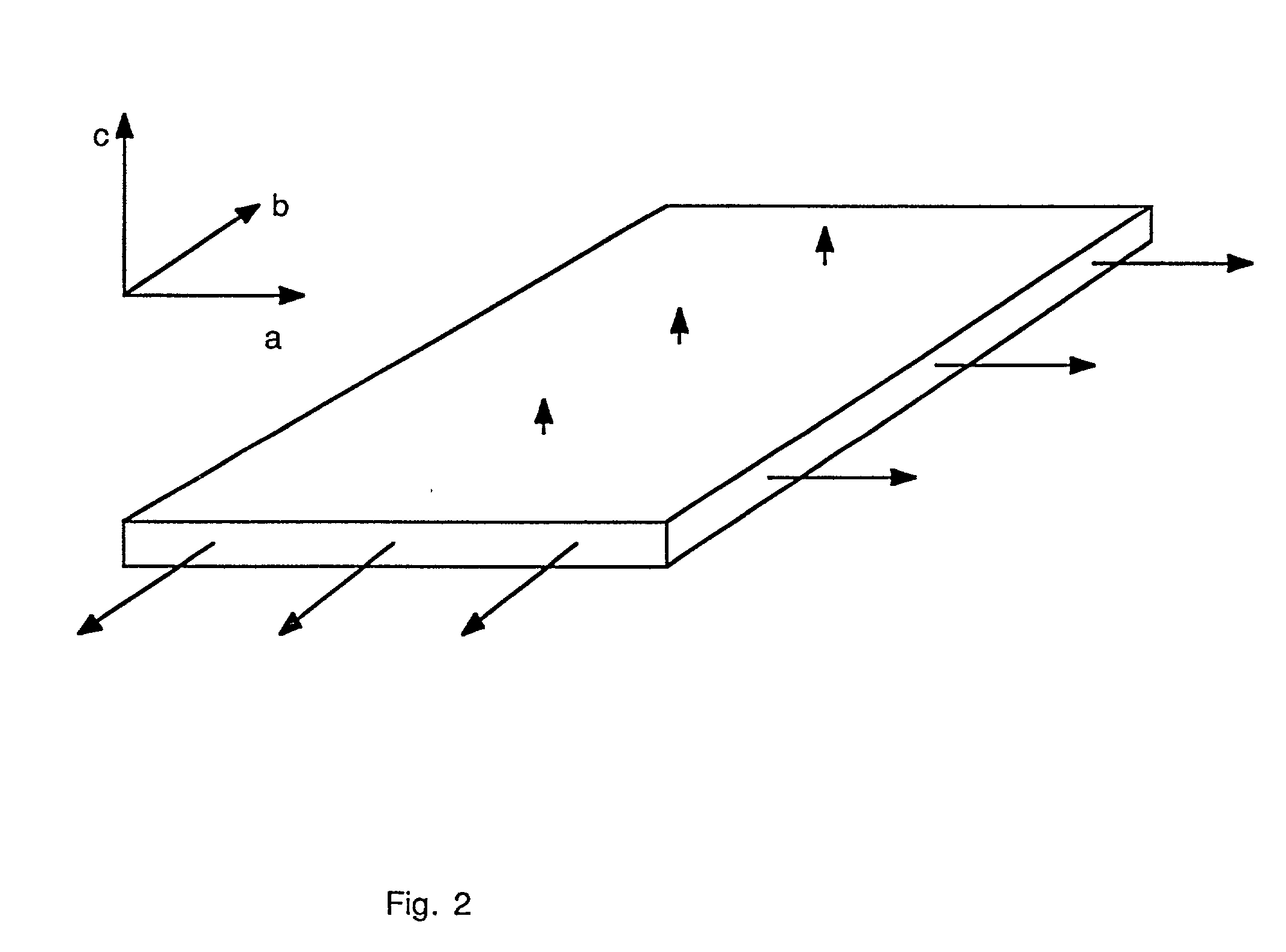Method of producing textured superconducting oxide bodies by the oxidation/annealing of thin metallic precursors and precursors and superconducting bodies produced by the method
a superconducting oxide and oxidation method technology, applied in the direction of superconductor devices, inorganic chemistry, electrical apparatus, etc., to achieve excellent superconductivity characteristics, reliable and reproducible, and resist cracking
- Summary
- Abstract
- Description
- Claims
- Application Information
AI Technical Summary
Benefits of technology
Problems solved by technology
Method used
Image
Examples
example 1
[0076] Metallic Y, Ba, Cu and Ag are mechanically alloyed in a high-energy ball mill. The ratio of metal species is Y:Ba:Cu:Ag=1:2:3:X, where X>0. The all-metal powder is packed into a silver tube. The tube is welded shut. The tube is then hydrostatically extruded at 300.degree. C. into a hexagonal cross-section wire. Several of such deformed tubes are repacked into another silver tube. This multifilament tube is then hydrostatically extruded at 300.degree. C. Several of these multifilament tubes may again be repacked into another silver tube and hydrostatically extruded at 300.degree. C. This packing-deforming-repacking-deforming . . . process is repeated until at least one dimension of each filament core is less than 100 microns in thickness, and preferably, less than 10 microns in thickness. The multifilament tube is then heated to 500.degree. C. in an oxygen-bearing atmosphere to completely oxidize the metals. The tube is then heated to 920.degree. C. for 400 hours to form the t...
example 2
[0077] Metallic Y and Ba are mechanically alloyed in a high-energy ball mill. The Y and Ba powder are placed inside a copper tube, which is, in turn, placed inside a silver tube. The thickness of the copper tube and the amount of Y and Ba powder added are such that the ratio of Y:Ba:Cu in the silver tube is 1:2:4. The silver tube is welded shut. The tube is then hydrostatically extruded at 300.degree. C. into a hexagonal cross-section wire. Several of such deformed tubes are re-packed into another silver tube. This multifilament tube is then hydrostatically extruded at 300.degree. C. Several of these multifilament tubes may again be repacked into another silver tube and deformed. This packing-deforming-repacking-deforming . . . process is repeated until at least one dimension of each filament core is less than 100 microns in thickness, and preferably, less than 10 microns in thickness. The multifilament tube is then heated to 400-600.degree. C. in an oxygen-bearing atmosphere to com...
example 3
[0078] An alloy of composition YBa.sub.2Cu.sub.3 is produced by mechanical alloying in a ball mill and then blending in Ag powder. The molar ratio of metal species in the blend is Y:Ba:Cu:Ag=1:2:3:X, where X>0. The all-metal powder is packed into a silver tube. The tube is welded shut. The tube is then hydrostatically-extruded at 300.degree. C. into a hexagonal cross-section wire. Several of such deformed tubes are re-packed into another silver tube. This multifilament tube is then hydrostatically extruded at 300.degree. C. Several of these multifilament tubes are again repacked into another silver tube and hot extruded. This packing-deforming-repacking-deforming . . . process is repeated as described above until at least one dimension of each filament core is less than 100 microns in thickness and preferably, less than 10 microns in thickness. The multifilament tube is then heated to 400-600.degree. C. in an oxygen-rich atmosphere to completely oxidize the metals. The tube is then ...
PUM
| Property | Measurement | Unit |
|---|---|---|
| thickness | aaaaa | aaaaa |
| temperatures | aaaaa | aaaaa |
| angle of misalignment | aaaaa | aaaaa |
Abstract
Description
Claims
Application Information
 Login to View More
Login to View More - R&D
- Intellectual Property
- Life Sciences
- Materials
- Tech Scout
- Unparalleled Data Quality
- Higher Quality Content
- 60% Fewer Hallucinations
Browse by: Latest US Patents, China's latest patents, Technical Efficacy Thesaurus, Application Domain, Technology Topic, Popular Technical Reports.
© 2025 PatSnap. All rights reserved.Legal|Privacy policy|Modern Slavery Act Transparency Statement|Sitemap|About US| Contact US: help@patsnap.com



